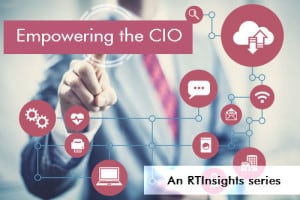
Rocana’s CEO explains the company’s approach to IT data monitoring using aggregates as well as root-cause analysis.
How do organizations monitor IT data in aggregate yet allow room to drill down into individual data for root cause analysis? Rocana’s CEO explains in the video below:
Transcript:
Adriane Bowles: Hi, I’m Adrian Bowles with RTInsights and Storm Insights. We conduct ongoing research into the opportunities and challenges presented by new technologies, and the day-to-day issues facing CIOs as they attempt to get the most out of their technology investments.
In this series, we ask executives of emerging and innovative technology firms how they address specific issues that today’s CIOs struggle with every day. Today’s guest is the CEO,and co-founder of Rocana.
In our conversations, you’ve talked a lot about monitoring everything. That sounds like a good idea, but the complexity of analyzing all that data is at it grows by orders of magnitude, will grow out of control using conventional methods. With that kind of scale do you need a statistical modeling approach? Can you tell me how you’re addressing the really big data with Rocana?
Omer Trajman: Statistical modeling is really just a tip of the iceberg. If you’ve looked at the stop-gap between classic monitoring, which started as “Let’s look at everything from one application,” to where monitoring is today, which is “Let’s keep as little as we need to, but summarize the data in ways that we think is important” … [and then] to where Rocana gets to, which is, “Let’s find a way to efficiently store all the data, and then aggregate it in different ways, and represent it to people visually so that they understand where to look to get at the root cause, to get at the underlying data set.”
In today’s environment, you have statistical models, but you don’t have the underlying data any more, because the systems are efficient enough to collect it and handle that. In the world with Rocana, you actually have the underlying data, and you have, not just the statistical models, you actually have machine learning that’s looking at the patterns in the data and saying, “Here’s a time period where I noticed a spike in activity. I noticed a deviation relative to history” — which we have, because we’re storing all the history and the data.
You also get pre-built aggregates, whereas with classic systems you had to think about, “How do I want to look at the data, because once I’ve summarized it, the raw data is gone.” With Rocana, we’re pre-building aggregates a thousand different ways. You’re looking at the data from different perspectives, from groups of hosts, to groups of systems, to groups of servers, to physical locations. Then if you want to look at it in a different way, we can just go back and aggregate the existing data set that we have.
The answer is it’s really a collection of big data approaches to managing the data center.
Adriane Bowles: Thanks, Omer, and thank you for watching. For more information on Rocana, please visit their website at Rocana.com. See more videos in this series, please visit RTInsights.com.



























